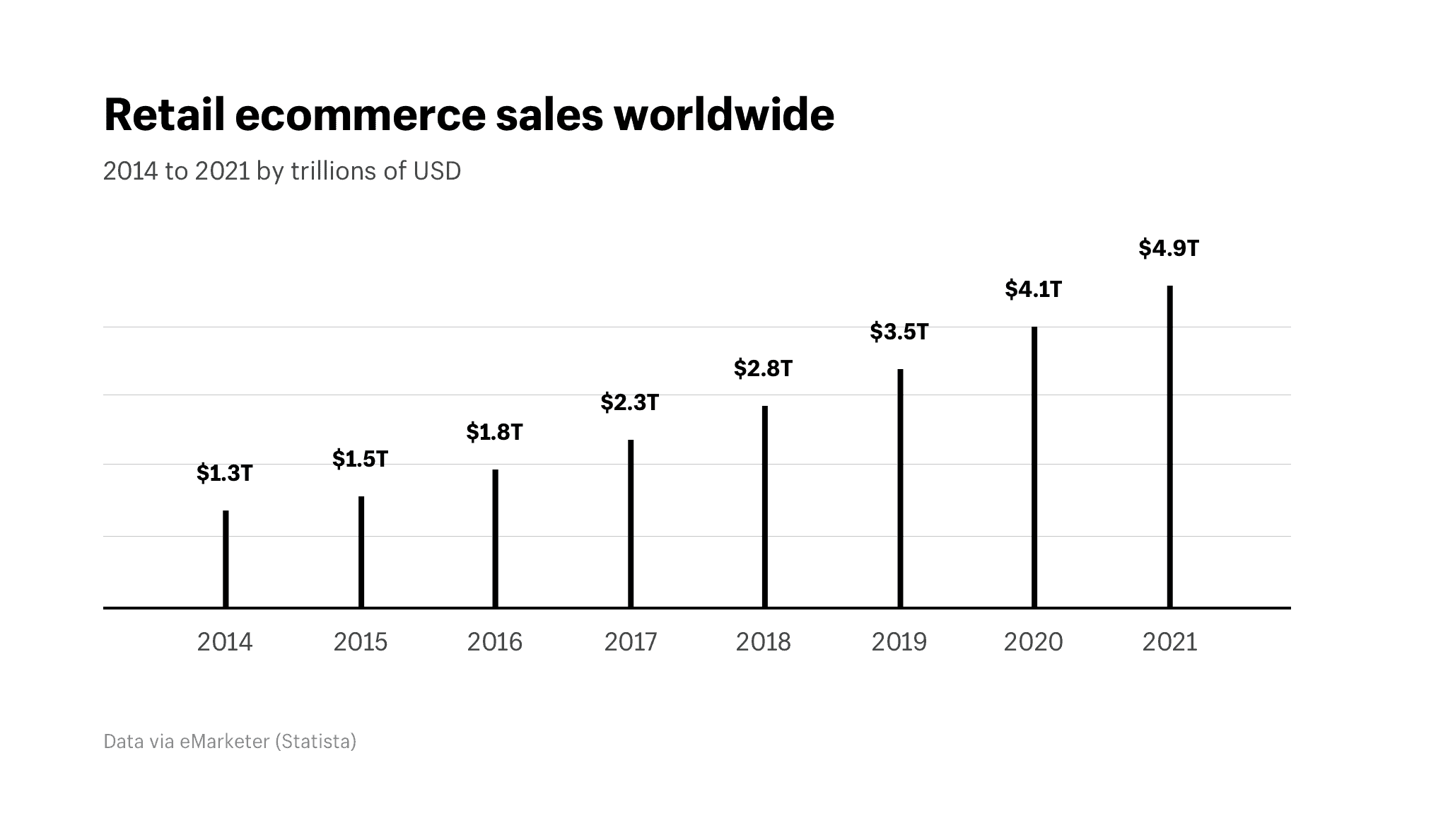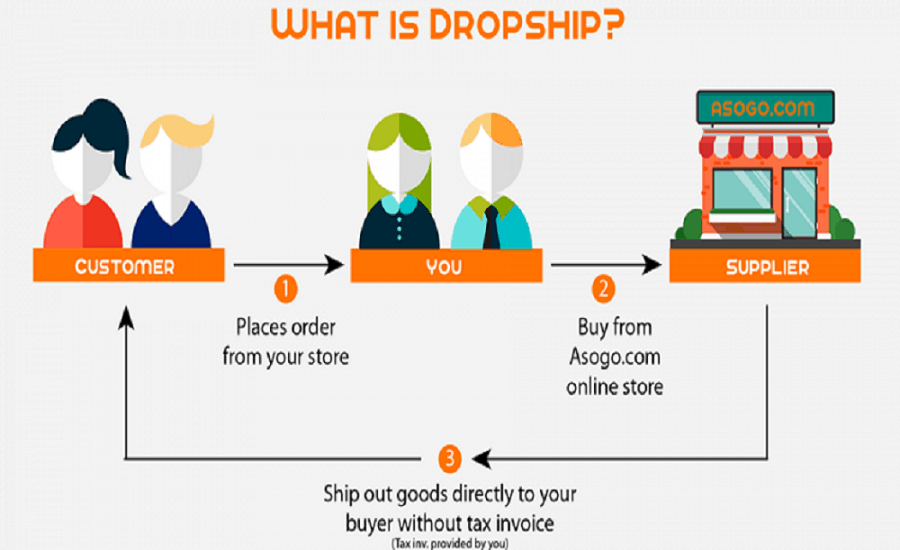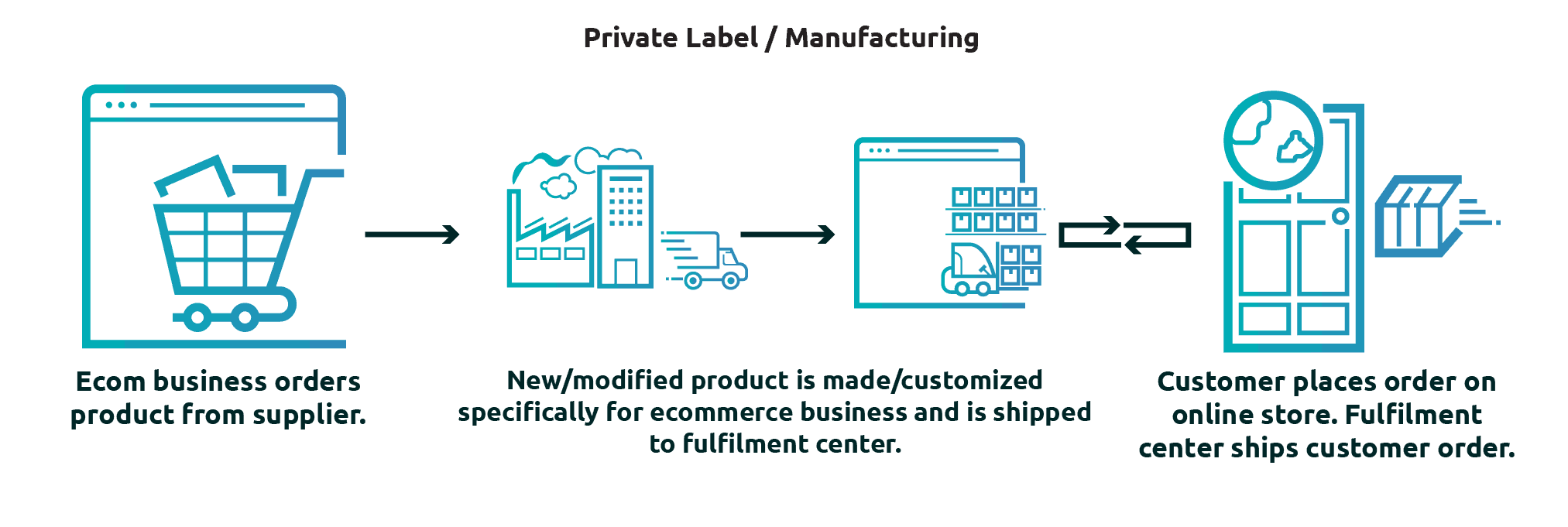

The idea of opening an online store is perhaps the best thing you can think of. This idea has changed the lives of many ambitious people and helped them achieve their freedom and financial stability.
Too bad the idea of creating an online store took lllooonnngggttteeemmmpppssssss to get home.
To convince me of the power of e-commerce, it was necessary to see others grow; wait, I say see, no, it is instead to help others to increase their turnover. As a web designer & marketer, I played an essential role in the development of different online shops.
While it’s refreshing to enslave ( test strategies with other people’s money : D) and help others succeed, it’s much more rewarding to start something for yourself from scratch. Moreover, to “watch” it grow. You build it, and nobody can take it
However, it’s life, and you can not take away the past, you can only learn from it. Moreover, I learned a lot about digital marketing, e-commerce, and startups.

Riding an E-commerce takes more than choosing a brand name, writing product lists, and starting to sell products online. Even the best business ideas can turn into a fiasco if you do not bring enough quality traffic to your site.
Open a new online store and do it effectively is a significant step that can decree the fate of its notoriety in the online world.
Rule # 1: Launch your online store as soon as possible
It’s time to kill your perfectionist tendencies! Creating a merchant site and launching it quickly is one of the best things you can do for your fledgling business.
If you are new to your niche, you probably have no idea who your clients are or what they need.
Oh, you may think you know it, but you do not know it.
So, trying to invest in creating the perfect store to meet the needs, desires, and problems of your customers is almost certainly a waste of time. Instead, build a first online store as quickly as possible to start interacting with your customers to find out more about them.
Once you have a better idea of your niche, you can improve your online sales site based on your new knowledge. Moreover, while you collect all this information, you will undoubtedly make some sales.
Launching new e-commerce on the web is a big challenge. The web universe is indeed crowded with online shops. Being able to get noticed is not easy. However, it started well is half done.
Even if we have to start fast, we must not fall into the error of being rushed by pushing the accelerator exclusively to obtain sales. It is necessary to enter this new world with prudence and wisdom, and especially with a clear and long-term strategic plan.
In order to help you create the strategic plan and avoid mistakes and problems that you do not even think about, I put this guide in place. It took me years to learn everything included on this page. Use the information here to set up your online store, legally protect yourself, tidy up your finances, market and sell your product, and start building your store.
- Step 1: Choose the market niche
- Step 2: Choose the Business Model
- Step 3: Business Persona & Product Selection
- Step 4: Establish the brand
- Step 5: Creating an online sales site
- Step 6: Marketing Products Online
The idea of opening an online store is perhaps the best thing you can think of. This idea has changed the lives of many ambitious people and helped them achieve their freedom and financial stability.
Too bad the idea of creating an online store took lllooonnngggttteeemmmpppssssss to get home.
To convince me of the power of e-commerce, it was necessary to see others grow; wait, I say see, no, it is instead to help others to increase their turnover. As a web designer & marketer, I played an essential role in the development of different online shops.
While it’s refreshing to enslave ( test strategies with other people’s money : D) and help others succeed, it’s much more rewarding to start something for yourself from scratch. Moreover, to “watch” it grow. You build it and nobody can take it.
However, it’s life, and you can not take away the past, you can only learn from it. Also, I learned a lot about digital marketing, e-commerce, and startups.
E-commerce is a growing business worldwide; starting an online store can get complicated quickly.
Riding E-commerce takes more than choosing a brand name, writing product lists, and starting to sell products online. Even the best business ideas can turn into a fiasco if you do not bring enough quality traffic to your site.
Open a new online store and do it effectively is a crucial step that can decree the fate of its notoriety in the online world.
Rule # 1: Launch your online store as soon as possible
It’s time to kill your perfectionist tendencies! Creating a merchant site and launching it quickly is one of the best things you can do for your fledgling business.
If you are new to your niche, you probably have no idea who your clients are or what they need.
Oh, you may think you know it, but you do not know it.
So, trying to invest in creating the perfect store to meet the needs, desires, and problems of your customers is almost certainly a waste of time. Instead, build a first online store as quickly as possible to start interacting with your customers to find out more about them.
Once you have a better idea of your niche, you can improve your online sales site based on your new knowledge. So while you collect all this information, you will undoubtedly make some sales.
Launching new e-commerce on the web is a big challenge. The web universe is indeed crowded with online shops. Being able to get noticed is not easy. However, it started well is half done.
Even if we have to start fast, we must not fall into the error of being rushed by pushing the accelerator exclusively to obtain sales. It is necessary to enter this new world with prudence and wisdom, and especially with a clear and long-term strategic plan.
In order to help you create the strategic plan and avoid mistakes and problems that you do not even think about, I put this guide in place. It took me years to learn everything included on this page. Use the information here to set up your online store, legally protect yourself, tidy up your finances, market and sell your product, and start building your store.
- Step 1: Choose the market niche
- Step 2: Choose the Business Model
- Step 3: Business Persona & Product Selection
- Step 4: Establish the brand
- Step 5: Creating an online sales site
- Step 6: Marketing Products Online
Step 1: Choose the e-commerce niche
Is your dream to open general e-commerce and compete with sacred monsters like Amazon and eBay?
- How to find the market niche to open your online business
- Analyze the competition in the niche E-commerce
No, no, I’m kidding. I’m sorry to tell you, but your dream is a utopia with little or no chance of success.
Unless you have a huge budget, you can not be the next eBay, Cdiscount or Amazon. This battle against the giants of e-commerce could turn into a real entrepreneurial hara-kiri.
Choosing your niche is the most crucial step in opening your online business. Your watchword, from now on, must be “focus”: to succeed on the web, you must first be able to find the perfect reference niche for you and your sales portal.
In the same way, the Amazon online store, by the way, which we all look at today with a mixture of worship and envy, started as a simple online library. He was a massive success as niche e-commerce, and from there he laid the foundation to become what he is today: to books, he added music CDs, then video games and computer equipment, to finally arrive at clothing, food and many other types of products.

His principle, as we know it today, was certainly not a lack of ambition, far from it: he only tolerated the primacy, big or small.
It must have been his, even if it was a village far from Gaul.
(Image Source: GWSS CWS History )
Here is just about the spirit with which you have to start looking at your e-commerce.
How to find the market niche to open your online business
Start this process by identifying successful companies that are already working in this space. Make sure the field is competitive – an absence of competition usually indicates that there is no market either.
Do not choose a crowded niche, however, and skip anything dominated by the big brands. If you have problems with this, find out what you want to do: the more specific you are, the less likely you are to compete.
Do you want to offer pet products?
You need to have a basic idea of what you want to sell before you can make any other decisions about your business. Tailored clothing, for example, does not work well with a dropshipping business model.
Ideally, your niche should be something you know about or can do some extensive research. The more you are familiar with the industry, the more insight you have into making your e-commerce business a success.
PRO TIPS
When you choose and look for your niche in creating a successful online store, there are a few things you should keep in mind. These included:
- There is an audience for what you do. In general, it is good to see at least some competition in a market because it means that there are interested buyers.
- You can offer something different. Realistically, can you bring something different to the niche you are looking at that is not already there?
- Have a niche wide enough. Nesting down is good. It helps you focus better and is a great way to start building your brand. However, if your niche is too small, you could limit yourself. Instead of selling “modern-metal electric guitars,” for example, it might be wise to focus on the whole range of “electric guitars.”
- Identify the profit margin. Do not forget that your goal is to sell and therefore to win. Therefore, before you start, try to calculate the economic return of your idea.
- You will be able to promote your products effectively.
- You have the legal right to sell the products of this niche.
Analyze the competition in the niche E-commerce
It’s always a good idea to make sure you do your homework on your competitors. This involves checking which online stores are already ranked for your relevant keywords in your area of business and evaluating which other products are already available on the market.
This is an excellent opportunity to evaluate what other industry players are doing well and to identify areas that you could improve.
Before you decide on an e-commerce niche, look carefully at your potential competitors. However, who are the competitors, or are they, compared to what to analyze the competition?
In my opinion, SEO means everything for any online business, although there is much more you can do to improve the performance of an online store. So, I recommend to all who want to create an online store to make SEO the mainstay of their online marketing strategy. Moreover, as a consequence to make the analysis of the competition also in concordance with the search engines.
In order to properly analyze the SEO difficulty for the keywords relevant to your niche, make sure to answer the following questions:
- 1. Is this niche already taken by the giants of online sales?
- 2. Are there many pages bidding on paid search?
- 3. The Authority of the sites on the first Google page is high?
Just search for the name of the niche and relevant products on Google and perform the necessary verifications. If the answers are definite, you will really struggle to win your place.
Identifying the right niche as a starting point for your e-commerce does not take a lot of research and hard work, but it can be a great way to really make a splash on a particular market, which otherwise would not be possible.
Step 2: Business Model Search for your Online Store
- Dropshipping (Online store without stock)
- Wholesale trade and warehousing
- Manufacturing / White Label
Opening an online store can evoke pictures of boxes of products available in your depot, but, although this is an option, it is not the only one.
Before you can decide what to sell online, you need to understand the different business models available.
There are several types of e-commerce business models that you can easily implement quickly: drop-shipping, wholesale and warehousing, and manufacturing / white label.
Dropshipping (Online store without stock)

Dropshipping is about selling products on your website that are made, managed, and shipped to your customers by someone else.
The Dropshipping business model allows you to make a profit via your online store without ever touching a product. This means that you do not need to make a significant investment outside of creating your sales site. When customers place an order, you order it directly from the seller of the product and have it delivered directly to the customer.
Generally, these relationships are established between you and a manufacturer or wholesaler who owns a warehouse filled with the items you want to sell.
Once the appropriate agreements are in place, the manufacturer or wholesaler will send you images of the products you want to sell with the prices. You will then place these items for sale in your online store. Your job is to sell the items, and the manufacturer or wholesaler prepares the orders and sends them to your customers.
What are you waiting for when you decide to open an online store without stock
- Creating a website and / or a Cdiscount / eBay / Amazon / Etsy store
- Catalog management: publishing, product update, inventory alignment
- Sale: Answer customer questions, phone calls, emails, live chat
- Orders: Send orders to the supplier
- Administration: Billing, collection management, payment of supplier invoices
- Customer Service: Problem Management, Returns, Delays, Lost Products
- Management: You have costs and requirements to manage (accounting, etc.)
The benefits of drop shipping
- One of the most popular benefits of the dropshipping model is the meager initial investment. You do not buy any of the products until one of them is ordered and paid for. It is a low-risk model. You do not have to stockpile stocks or deal with the problem of order management.
- Endless selling possibilities. Depending on the number of contracts with different suppliers, you can sell all the products of all the brands you want because, not having to manage the goods in your warehouse, you can offer anything.
- Unlimited purchase possibilities. You can explore the possibility of relying on foreign producers, paying attention to the actual quality of the chosen products.
- In addition, the advantage of being able to conduct the activity anywhere, without the need for a permanent location, should not be underestimated.
The disadvantages of dropshipping
- Sale of other people’s products. Selling with this method means promoting products of other brands. Therefore, in the market, you remain a mere salesman who, if a competitor is more competitive from the economic point of view or the visibility, can eclipse you.
- Low-income gain To have a right profit margin, you must find an honest and convenient drop shipper or try to guarantee large quantities of orders, which allows you to get more or less significant discounts.
- No control over shipping and execution. Sometimes your suppliers let you down. If a supplier sends the order late or forgets to provide you with a tracking number, it increases your customer service responsibilities.
- Almost infinite competition. Since the same product can be purchased online, the consumer may find lower prices, which is a big problem for the seller to succeed.
- Dropshipping scams. Like everywhere in the world, even in the drop shipping sector, some companies are working not to create lasting partnerships, but to try to capture intermediaries as much as possible and to disappear suddenly. Better to rely on established drop shipping companies, with lots of positive feedback online / offline.
Bulk buying and storage
Operating a wholesale and warehousing business model is relatively more straightforward than dropshipping.
This business model is based on the principles of offline wholesale. That is, you buy products directly from the manufacturer or intermediaries at discounted rates, store them in your warehouse and sell them at favorable prices. This business model is suitable for companies with guaranteed demand.
Implementing and managing a wholesale and warehousing e-commerce model requires a lot of investment and oversight.
What are you waiting for when you choose the wholesale business model?
- Rental or purchase of a warehouse
- Purchase of products (wholesale)
- Creating a website and / or a Cdiscount / eBay / Amazon / Etsy store
- Catalog management: publishing, product update, inventory control, and management
- Sale: Answer customer questions, phone calls, emails, live chat
- Orders: Send orders to the customer
- Administration: Billing, collection management
- Customer Service: Problem Management, Returns, Delays, Lost Products
- Management: You have costs and requirements to manage (accounting, etc.)
The benefits of wholesale purchasing and warehousing
- Appropriate purchase price. With this model, you get better prices, because you buy wholesale instead of making unit purchases as in the case of drop shipping.
- Better margins. If you buy wholesale and sell items individually on your merchant site to consumers, you also have better margins.
- Proven products. How in the case of dropshipping you deal with brands already established and validated on the market, you do not run the risk of wasting time and money developing a product that nobody wants.
The disadvantages of bulk purchasing and warehousing
- Considerable initial investment. This model requires high initial investments for product purchase and storage.
- Need many sales. The business can suffer losses if there is not much demand. To generate profits, the number of sales must be high.
- Logistics. If you receive many orders, the process to respond quickly can be lengthy and costly.
Manufacture of own products / White label

Manufacturing is when you really pay to have the items created for you. In the case of the white label, you do not manufacture the product, but your license agreement allows you to affix your name or trademark as if you were the manufacturer.
What are you waiting for when you choose to create your brand
- Build your products or partner with manufacturers
- Control the quality of products
- Rental or purchase of a warehouse
- Creating a website and / or a Cdiscount / eBay / Amazon / Etsy store
- Catalog management: publishing, product update, inventory control, and management
- Sale: Answer customer questions, phone calls, emails, live chat
- Orders: Send orders to the customer
- Administration: Billing, collection management
- Customer Service: Problem Management, Returns, Delays, Lost Products
- Management: You have costs and requirements to manage (accounting, etc.)
The benefits of having your own brand
- Total control. You can control the entire cycle and always know what’s going on with the product. Also, at this point, you can take advantage of wholesalers and drop shipping to sell your retail products.
- Better margins. When you make your products or import the products from abroad, your margins are much higher. You create the product at a meager price and then sell it online for a much higher price.
- Differentiate yourself from the competition. You can stand out of the competition with innovative or better products.
The disadvantages of creating your products
- Quality control. You must develop a process to monitor and maintain quality control.
- Initial investment. It is undoubtedly an advanced model. There is almost always a significant investment required right from the start, so you need to have a financial plan.
- Brand awareness. When you start, no one knows your brand. You need to do much more to sell your branded products than already established brands.
Step 3: Buyer persona and product selection
- Know the target
- Product selection
- Factors in determining the price of a product
Now that you have identified a niche and an economic model, you may be tempted to start looking for products to sell.
Do not do it. Before thinking about product ideas, think about your buyer’s profiles. You can not expect people to buy your product if you do not know whom you are selling to.
You need to project a consistent branding (a journey starting with your brand).
Know the target
Who will probably buy your products or services? One of the first things to do is to study what is the target of your business. In fact, talking to young people is different from communicating with very adult people; customers who can buy a luxury product have different needs from those who purchase mass-produced products; the female audience seeks a different content from that of men; And so on. Identifying your audience allows you to focus on the communication channels, the style to adopt, and the content to be produced.
Create your buyer profile – it’s the identity of your typical customer to identify their characteristics and preferences, even before they start building the eCommerce site. The aesthetics of the site itself can be influenced by the type of customer you want to reach. For example, a site where you sell children’s products will look different from a site that offers gardening items or DIY tools.
Selection of products for your E-commerce
Once you have identified the image you want to project and the customer you want to satisfy, it’s time to select products for your
Ecommerce.
You want your products and suppliers to be chosen and ready for use before doing anything else.
If you do dropship, establish these relationships and make all the necessary contracts. If you choose storage, make sure your first inventory is in place. Manufacturing companies will want to have at least their first batch of ready-to-use products.
Do not forget to look for quality, because that’s what your customers will want too. You want a product and a vendor you can depend on. Before investing in the product, however, evaluate it carefully. Even if you choose a dropshipping model, you want to test it carefully and familiarize yourself with the product yourself to identify any potential problems and prepare customer service scripts to answer common questions.
Factors that will help you determine the price of a product
The factors that will allow you to get the right price for your product are the ones that will be affordable for your customers, without creating a price war between you and your competitors. Pricing must also not affect the overall revenue of your business.
You can quickly start with high prices for you and your business if you start by limiting your operational costs and choosing a business model that is not likely to stretch the resources of your e-commerce business.
